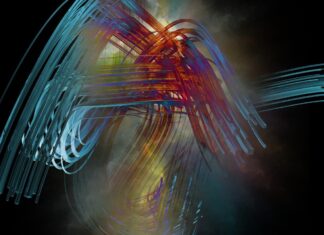The Graph is an open-source protocol that enables developers to efficiently access blockchain data and build decentralized applications (dApps) on Ethereum and other blockchain networks. Launched in 2018, The Graph has quickly become a fundamental component of the Web3 ecosystem, providing a decentralized indexing and querying service for blockchain data. In this comprehensive overview, we will explore the history, technology, use cases, governance, partnerships, and future prospects of The Graph Crypto.
1. Founding and History
The Graph was founded in 2018 by Yaniv Tal, Brandon Ramirez, and Jannis Pohlmann, with the mission of democratizing access to blockchain data and empowering developers to build decentralized applications with ease. The founders recognized the need for a decentralized indexing and querying solution to overcome the limitations of centralized infrastructure and enable the creation of scalable, interoperable dApps on blockchain networks such as Ethereum.
2. Technology and Protocol
At the core of The Graph protocol is a decentralized network of indexers, curators, and consumers that collaborate to index, query, and serve blockchain data in a trustless and efficient manner. Indexers are responsible for ingesting data from blockchain networks, organizing it into searchable data structures known as subgraphs, and indexing it on The Graph network. Curators, on the other hand, are responsible for selecting and signaling high-quality subgraphs, while consumers query the indexed data to retrieve information for their dApps.
3. Subgraphs and Query Language
Subgraphs are modular, composable building blocks that define how specific blockchain data is indexed, organized, and queried on The Graph network. Developers can create custom subgraphs to index data from smart contracts, transactions, events, and other on-chain activities related to their dApps. Subgraphs are defined using a declarative query language called GraphQL, which allows developers to specify the data they want to retrieve and how it should be structured, making it easy to build complex and efficient queries for their dApps.
4. Use Cases and Applications
The Graph is used by developers and organizations across various industries to build a wide range of decentralized applications and services. Common use cases include decentralized finance (DeFi), non-fungible tokens (NFTs), gaming, decentralized identity, supply chain management, and more. By providing a reliable and scalable infrastructure for indexing and querying blockchain data, The Graph enables developers to create dApps that are more efficient, secure, and user-friendly than traditional centralized alternatives.
5. Governance and Community
The Graph protocol is governed by a decentralized community of stakeholders who participate in key decision-making processes, such as protocol upgrades, parameter changes, and funding allocation. Governance is facilitated through a token-based voting system, where GRT token holders can propose, discuss, and vote on governance proposals using on-chain governance mechanisms. The Graph Foundation, a non-profit organization, provides support and resources to the community, including grants, education, and ecosystem development initiatives.
6. Partnerships and Integrations
The Graph has formed strategic partnerships and integrations with leading blockchain projects, dApp developers, and organizations to expand its ecosystem and increase adoption. These partnerships enable developers to access a wide range of data sources and services through The Graph network, making it easier to build interoperable and scalable dApps. Key partners include Ethereum, Uniswap, Aave, Chainlink, Decentraland, and many others.
7. Growth and Adoption
Since its launch, The Graph has experienced significant growth and adoption, with thousands of subgraphs deployed on its network and millions of queries processed daily. The protocol has become a critical infrastructure layer for the Web3 ecosystem, providing essential indexing and querying services for developers building decentralized applications. The Graph’s growing community of developers, users, and stakeholders continues to drive innovation and collaboration, further accelerating the adoption of decentralized technologies.
8. Challenges and Future Prospects
Despite its rapid growth and adoption, The Graph faces several challenges and opportunities as it seeks to scale and mature as a protocol. Key challenges include scalability, privacy, interoperability, and regulatory compliance, which must be addressed to ensure the long-term success and sustainability of the protocol. Additionally, The Graph is exploring new features, such as decentralized storage and identity solutions, to enhance its capabilities and address emerging needs in the evolving landscape of decentralized finance and Web3 applications.
9. Adoption in Decentralized Finance (DeFi)
One of the prominent use cases for The Graph is in the decentralized finance (DeFi) sector. DeFi platforms rely heavily on real-time and historical data from various blockchain networks to facilitate lending, borrowing, trading, and other financial activities. The Graph’s decentralized indexing and querying service provide DeFi developers with reliable and efficient access to on-chain data, enabling them to build sophisticated and user-friendly applications that offer transparency, security, and accessibility to users worldwide.
10. Future Developments and Roadmap
Looking ahead, The Graph continues to focus on improving its protocol, expanding its ecosystem, and driving adoption across the Web3 landscape. The project’s roadmap includes several key initiatives, such as improving network scalability, enhancing developer tooling and documentation, integrating with additional blockchain networks, and exploring new use cases and applications for decentralized indexing and querying. With its vibrant community, innovative technology, and commitment to decentralization, The Graph is well-positioned to lead the next wave of innovation in the decentralized web.
The Graph is a fundamental building block of the Web3 ecosystem, providing developers with decentralized indexing and querying services for blockchain data. With its innovative technology, vibrant community, and growing ecosystem of partners and developers, The Graph is driving innovation and adoption across various industries, including decentralized finance, non-fungible tokens, gaming, supply chain management, and more. As the decentralized web continues to evolve and mature, The Graph’s role as a critical infrastructure layer for decentralized applications is likely to become even more pronounced, shaping the future of the digital economy and empowering users worldwide.
Conclusion
In conclusion, The Graph is a decentralized indexing and querying protocol that is revolutionizing the way developers access and interact with blockchain data. By providing a reliable, efficient, and decentralized infrastructure for indexing and querying blockchain data, The Graph enables developers to build scalable, interoperable, and user-friendly decentralized applications across various industries. With its growing ecosystem, community-driven governance, and commitment to innovation, The Graph is poised to play a leading role in shaping the future of decentralized finance, NFTs, gaming, and other Web3 applications.






















